Understanding Volume Problems: A Guide for Young Learners
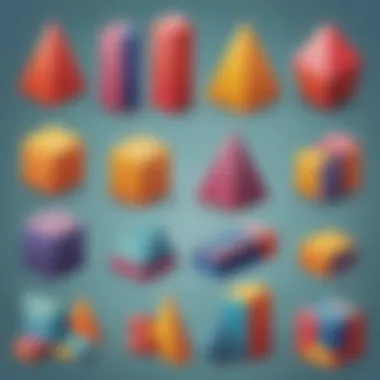
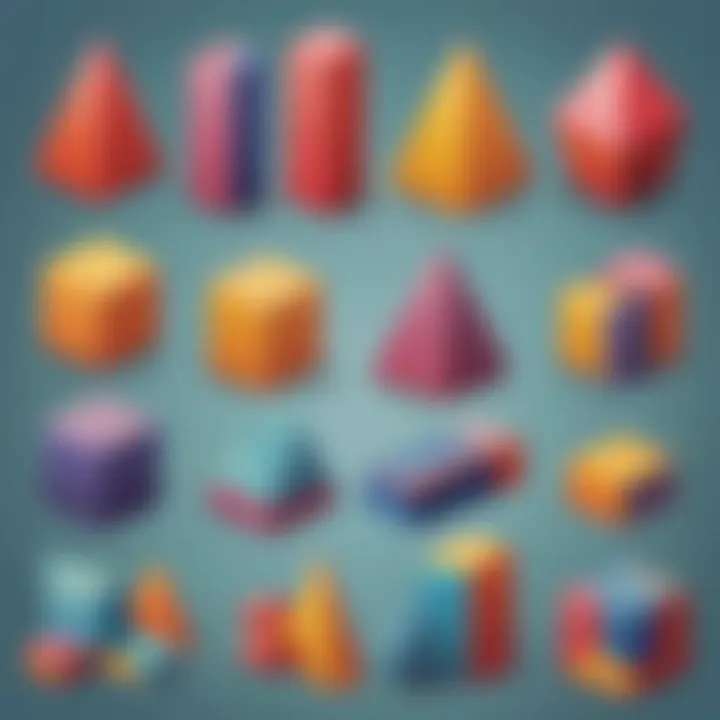
Intro
Understanding volume is essential in many aspects of life, from simple packing tasks to more intricate design projects. For young learners, grasping volume can be quite exciting, as it not only involves mathematical calculations but also creativity and practical applications. This guide aims to clarify key concepts about volume, making it easier and more enjoyable for elementary school children to learn and apply.
By engaging with hands-on activities, young learners can experience volume concepts firsthand. These activities promote exploration and problem-solving, essential skills in mathematics and beyond. This article will take a detailed look into creative activities, fun quizzes, and fact-based articles that deepen understanding of volume.
Creative Activities
By integrating creativity into learning, children often find they can engage more fully with difficult subjects like volume. Here are some great ways to introduce volume concepts through arts and crafts.
Craft Ideas
Several craft ideas can keep children engaged while teaching them about volume:
- Making a Volume Box: This task involves decorating shoeboxes to use as models for equal volumes. Children can experiment with varying heights and widths.
- Homemade Playdough: Using flour, salt, and water allows learners to mold shapes. Encourage them to create different 3D shapes and then calculate their volumes.
- Measuring Water: Using measuring cups to fill different containers instills an understanding of liquid volume. Task the children to measure and predict how many cups of water fit into different-sized jars.
Step-by-Step Guides
To facilitate understanding, consider the following step-by-step approach:
- For the Volume Box activity, start by discussing basic dimensions like length, width, and height. Next, guide them in measuring these dimensions on their shoeboxes.
- For the Homemade Playdough, provide children with an ingredient list, giving them precise ratios to achieve a thicker or thinner consistency.
- Lastly, during measuring water, remind them to maintain careful records of how many cups fit into each container. This method enhances number literacy and volume comprehension.
Educational Value
Engaging in these types of activities provides children with multi-dimensional learning experiences. Each craft not only nurtures math skills but also develops dexterity and creativity. By experiencing volume in practical scenarios, learners can often recall and apply what they've learned more effectively compared to traditional exercises.
Fun Quizzes
Adding a quiz component can further enrich the learning experience. A well-structured quiz can provide immediate feedback and promote self-assessment. Here’s how:
Quiz Topics
The volume-related quizzes might cover themes like:
- Basic Definitions of Volume
- Volume Calculations Using Formulas
- Comparing the Volumes of Different Objects
- Real-World Volume Situations and Problem Solving
Question Types
By employing diverse question types such as:
- Multiple Choice: Great for basic definitions where choices can reflect real-world scenarios.
- True/False Statements: Enhancing knowledge of misconceptions in volume concepts.
- Fill in the Blanks: Testing comprehension of volume formulas and their applications.
Knowledge Reinforcement
Quizzes serve as powerful tools for reinforcing learning. Through interactive quizzes, children can gauge their understanding actively. Schools often report that children who regularly take quizzes better retain mathematical knowledge long term.
Fact-Based Articles
Articles that explain volume concepts in engaging ways can further assist in learning. Children vary in how they interact with written content, so having access to these articles can be highly advantageous.
Topics
A rich range of topics could be explored:
- Historical perspectives on volume measurement.
- The connection between volume and geometry, overseeing shapes and solids.
- Applications of volume in everyday life like cooking, construction, and scientific experiments.
Engaging Content
These fact-based articles should aim to break down complex ideas into manageable sections. Simplified language paired with clear graphics captures young readers' attention without overwhelming them.
Prelims to Volume Problems
Understanding volume problems is a vital part of geometric education. Before diving into complexities of volume calculation, young learners benefit from a clear overview that sets the foundational knowledge. This section offers a succinct introduction, showcasing what volume represents and why mastering it is significant.
What is Volume?
Volume refers to the amount of three-dimensional space an object occupies. It answers the question, "How much can fit inside?" in a tangible context. This is not only relevant in mathematics but also essential in daily life scenarios. For instance, when filling a container with liquid, understanding its volume ensures that it holds the proper amount.
In geometric terms, the volume of shapes can be represented by specific formulas depending on their structure. For a cuboid, the formula is length multiplied by width times height, while for a cylinder it’s the area of the base times the height. Grasping these definitions sets the stage for tackling volume problems with confidence.
Importance of Understanding Volume
Grasping the concept of volume holds various benefits for young learners.
- Heightens Spatial Awareness: Understanding volume fosters a keen spatial perception necessary for navigating real-world environments. It improves their ability to visualize how objects occupy space and interact in their physical surroundings.
- Enhances Problem-Solving Skills: Engaging with volume problems helps develop critical thinking. Students learn to break down complex shapes into simpler structures, making it easier to apply relevant formulas.
- Promotes Practical Application: Volume spans multiple aspects of daily activities. From cooking to constructing, understanding how volume works helps to solve real-life issues effectively. For example, knowing how to calculate volume can enhance safe storage options; it allows for better arrangements of boxes in a vehicle or finding the right pot for a recipe.
By establishing an early understanding of volume, young learners are better prepared to succeed in mathematics and its application. This section aims to kickstart their journey into the fascinating world of volume problems, shedding light on its role and usefulness.
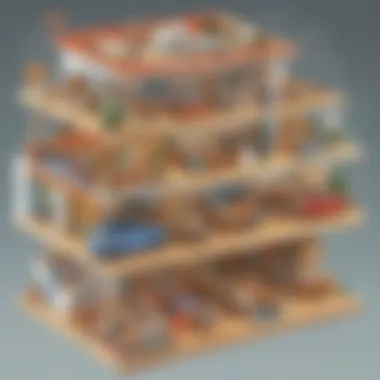
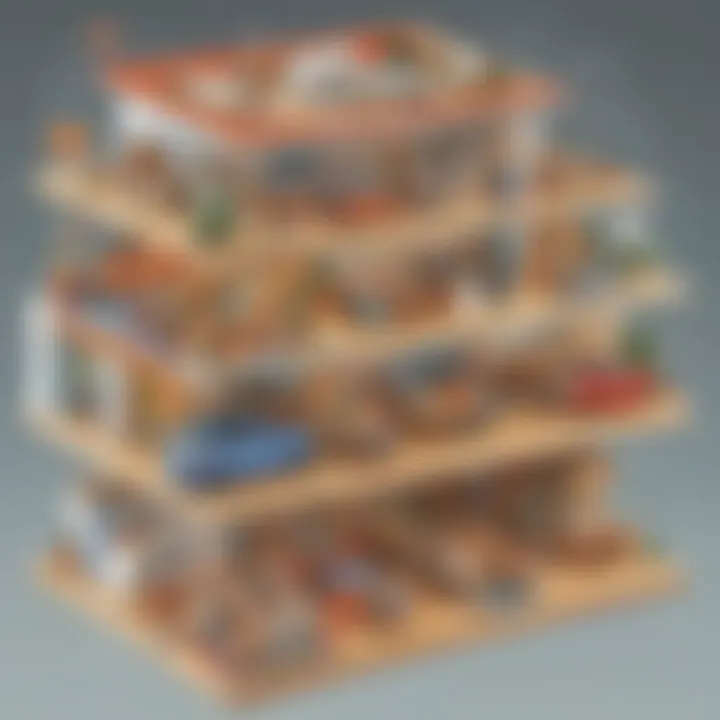
The Basics of Volume Measurement
Understanding the basics of volume measurement is essential for grasping how to calculate and work with volume effectively. In this section, we focus on two main aspects: units of volume and the difference between volume and capacity. Mastering these concepts allows young learners to approach volume problems with confidence.
Units of Volume
To accurately measure volume, it’s necessary to use specific units based on the substance being measured. This segment delves into common units of volume that are used for both liquids and solids.
Common Units for Liquid Volume
When talking about liquids, the most frequently used units are liters and milliliters. Liquid volumes are essential because they allow us to measure substances accurately in cooking, mixing, and storing liquids.
For example, when a recipe calls for 2 liters of water, understanding this unit ensures proper measurement. Mililiters are also common; they provide finer granularity. One key characteristic of these units is their adaptability. They can easily be converted to fit different needs, such as from milliliters to liters, as larger volumes are often required in recipes or beverage servings.
The unique feature here is that milliliters and liters are part of the metric system, making them a standard go-to for many around the world.
An advandage of using these metric units is ease of conversion. However, an occasional challenge is their overuse in some contexts, leading to possible confusion between imperial and metric measurements.
Common Units for Solid Volume
In contrast to liquids, solids are typically measured in cubic centimeters (cm³) and cubic meters (m³). These units help us understand the space occupied by three-dimensional objects like boxes, furniture, or even toys. In this case, the measurements can aid in packaging or fitting items into limited spaces.
A significant characteristic of solid volume units is their clarity; it is always evident how much space an object takes up. For example, when we say a box has a volume of 1 cubic meter, it is easy to visualize.
A unique feature is that these units are often less flexible than liquid units. Conversions can be complicated at times, especially when switching between metric and imperial systems. This can lead to mistakes if one is not careful.
Volume vs.
Capacity
Understanding the terminology difference between volume and capacity is crucial. While both terms relate to the amount of space something occupies, volume measures the space itself, whereas capacity usually refers to how much a container can hold.
For instance, considering a glass of water, we could say:
- The volume of water inside the glass is 'X' milliliters
- The capacity of the glass itself may be 'Y' milliliters.
Scrutinizing this distinction encourages clear thinking during volume problems. Mixing these terms can lead to erroneous calculations or concluded assumptions.
In summary, mastering units of volume and understanding the distinctions between volume and capacity lays a robust foundation for tackling various volume challenges. As learners move forward into real-world applications and deeper mathematical concepts, this foundational knowledge remains crucial.
Types of Volume Problems
Understanding different types of volume problems is crucial for grasping the broader concept of volume. These problems help students see how volume applies to distinct geometric shapes and also provide context for practical applications. By identifying types, learners can tailor their approaches to best fit the specific problem. This specificity not only aids in clarity but also enhances problem-solving skills that have relevance across various fields.
Finding Volume of Prisms
Cuboids
Finding the volume of a cuboid is fundamental in understanding three-dimensional shapes. A cuboid, characterized by six rectangular faces, presents a straightforward case for exploration in the realm of volume. The key characteristic of cuboids is that their length, width, and height are all right angles to each other. This geometric property simplifies calculations using the formula: Volume = length × width × height. Using cuboids in educational settings is advantageous because they are frequently encountered in everyday life. Common items like boxes and buildings have cuboidal shapes, allowing learners to make real-world connections. However, a disadvantage can be that students may overlook more complex concepts of volume, should they focus solely on these simpler shapes.
Cylinders
Cylinders represent another important type when finding volume. Defined by two circular bases and a height perpendicular to the bases, cylinders introduce circular geometry into volume problems. Students learn that the formula for a cylinder is Volume = π × radius² × height. This geometric shape is highly relevant because many objects in daily life, such as cans, pipes, and bottles, take on this structure. The round shape of the bases allows students to develop skills in calculating area, which ties into larger mathematical concepts. However, the complexity of using π can occasionally confuse learners, necessitating careful problem clarification.
Finding Volume of Pyramids
Square-Based Pyramids
Square-based pyramids have a unique structure that involves a square base and triangular sides meeting at a single point. Understanding the volume of these pyramids can engage learners in visual spatial reasoning. The formula used is Volume = (1/3) × base area × height. The prominence of square bases makes them familiar figures for young students as they can visualize their own structures or toys with this shape. This familiarity contributes positively to learning, facilitating active participation in problem-solving. The disadvantage, however, is that alg https://en.wikipedia.org/wiki/Pyramid this triangular aspect may serve to be less intuitive for some students.
Triangular Pyramids
Triangular pyramids, or tetrahedrons, feature triangle-based faces composed of four triangular sides. Calculating their volume can pose challenges, as the formula is a bit more complex: Volume = (1/3) × base area × height. The real-world presence of triangular forms, such as pyramids in architecture, encourages observation and heightens interest. This shape teaches students to evaluate geometric properties from diverse perspectives. Still, triangular pyramids might be alien to some learners, complicating initial assimilation.
Finding Volume of Composite Shapes
Composite shapes are made up of two or more basic geometric figures combined together. Solving volume problems with composite shapes requires a robust understanding of lower-level shapes, heightening the intellectual challenge. An emphasis on breaking down these shapes into simpler figures before calculating volume enhances comprehension of geometry and critical thinking. However, misunderstandings may arose when students attempt oversimplification or misjudgement of size proportionality.
Formulas for Calculating Volume
Understanding the formulas for calculating volume is essential in grasping the basic concepts of geometry. Knowing how to calculate volume aids learners in supporting their mathematical skills. By engaging with these formulas, students can relate mathematical theory to real-world scenarios. This solid foundation instills confidence as they face more complex problems in the future.
Volume of Rectangular Prisms
The volume of rectangular prisms is calculated using the formula:
Volume = Length × Width × Height
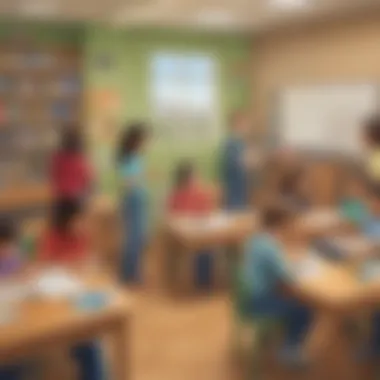

This simple formula is user-friendly for students. Understanding how to compute the volume starts from recognizing the dimensions of everyday objects, like a cereal box or a gift box. Children can visualize these shapes easily, making learning intuitive and concrete. With blocky shapes suitable for classroom activities, learners often enjoy applying this formula.
If a box has a length of 5 cm, width of 3 cm, and height of 4 cm, they can multiply the numbers as follows:
Such examples encourage learners to practice their multiplication skills while understanding measurement as well.
Volume of Cylinders
Calculating the volume of cylinders introduces a concept that ties closely to real-life applications, such as soda cans and pipes. The formula for a cylinder is:
Volume = π × Radius² × Height
Where π (pi) is approximately 3.14. For instance, if a cylinder has a radius of 2 cm and height of 5 cm, they will calculate volume like this:
It explains the reasoning behind the multiplication of the base area with the height. Students can better understand through physical experience, maybe by filling up real cylindrical objects with water.
Volume of Cones and Spheres
For volume calculations of cones and spheres, the formulas expand students' understanding. These shapes are often explored using:
- Volume of a Cone: Volume = (1/3) × π × Radius² × Height
- Volume of a Sphere: Volume = (4/3) × π × Radius³
These formulas help to mix learning with critical thinking as students compare different shapes. For example, in calculating the volume of a cone, if a cone has a radius of 3 cm and a height of 4 cm, it works as follows:
The recognition of volumes in forms invokes creativity in children, as they may find where cones or spheres are in real life, enriching their learning even further.
By understanding these formulas, learners prepare themselves better to explore more complicated mathematical ideas and improve their critical thinking in everyday applications.
Real-Life Applications of Volume
Understanding volume is fundamental not just in a classroom setting but also in everyday life. It helps young learners connect theory to practice, enhancing their comprehension of measurements and spatial understanding. Its relevance transcends math class, influencing decisions and actions in several practical situations. Furthermore, teaching volume through practical applications makes it more engaging and meaningful for students.
Volume in Cooking
Cooking is an enjoyable activity that involves precise measurements. Volume is a crucial factor in this context, as it helps ensure the correct proportions of ingredients. For instance, a recipe might call for two cups of flour or three tablespoons of sugar. Understanding how to measure these accurately using volume measurements guarantees that meals turn out as intended.
When baking, for example, correct volumes can determine the texture and structure of pastries and breads. Using improper measurements could lead to disastrous results like a cake not rising or cookies turning hard. By learning about volume in cooking, children not only grasp mathematical concepts but also appreciate how these principles apply to daily tasks and needs.
Volume in Packing
Packing can hood up several challenges. Whether it is in travel or shipping items, understanding volume is vital for maximizing space. When packing a suitcase or filling a box for shipping, knowing how to calculate volume helps in using space efficiently. For example, figuring out how many clothes can fit into a bag based on its dimensions involves volume calculations.
Students can also explore real-world packing scenarios. For instance, consider things like fitting toys into a container. Calculating how much can fit helps solve practical problems encountered while dealing with limited space. This application brings math to life, as it captures attention and invites solution-focused thinking within young learners.
Volume in Construction
Construction demands careful consideration of volume during planning and execution. Many building materials are sold based on volume. For example, concrete is purchased by the cubic meter, bricks are packed in certain volumes, and many design concepts rely on volume calculations for safety and aesthetics.
When children see that volume is involved in creating something as significant as a building they inhabit or a park they play in, it fosters a sense of values about their surroundings. It can generate interest in architectural careers or hobbies, stimulating their critical and analytical skills. Knowing volume enables a better understanding of how things come together in the real world, leading not just to an appreciation of geometry but also of spaces and places in their lives.
Understanding how volume functions in various aspects of life enables students to develop important life skills like negotiation, balancing resources, and planning.
Through cooking, packing, and construction, volume applications lead children to see math as an integral part of life rather than a separate subject. This connection cultivates a mindset eager to explore and question more about the world around them. Encouraging curiosity about volume consequently inspires a long-term appreciation for math and reasoning in all students.
Common Volume Problems and Mistakes
Understanding common volume problems and mistakes is crucial for young learners. These issues not only help students correct their calculations but also improve their overall comprehension of volume as a mathematical concept. Recognizing mistakes builds a strong foundation for future learning. It encourages a proactive approach to problem-solving where learners, rather than simply memorizing formulas, develop a genuine grasp of the material.
Common Errors in Calculation
Errors in calculation can arise from various factors, often leading to frustration and confusion. Mastering basic skills in addition, subtraction, multiplication, and division plays an important role in avoiding mistakes related to volume problems. When students are not quick or confident in these skills, they may falter in multi-step calculations required to find volume.
In addition, calculation mistakes can stem from misunderstanding the relationships between the units of measurement. For instance, unknowingly mixing milliliters and liters can produce incorrect results. Here are some common errors to watch for:
- Misapplying formulas: Students sometimes mix up formulas for different shapes.
- Incorrect unit conversions: Confusion can happen when changing units between metric and imperial systems.
- Skipping steps: In the rush to complete problems, learners may overlook important steps in calculations.
By spotlighting these potential pitfalls, students can refine their computational methods. Practicing regularly and confirming their work can greatly reduce errors.
Understanding Misinterpretations
Misinterpretations of volume concepts can severely affect learning. It is key for students to fully understand what a question is asking before jumping to a solution. Volume issues often introduce abstract concepts, which can lead to misthinking the dimensions that matter. For example, students may confuse height with the overall measurement of an object leading them to calculate the volume incorrectly.
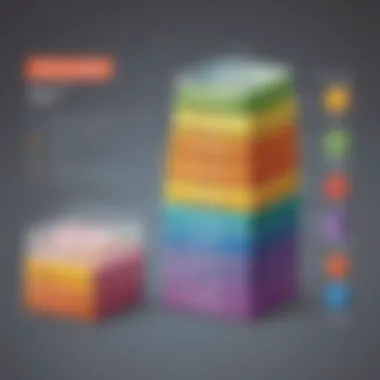
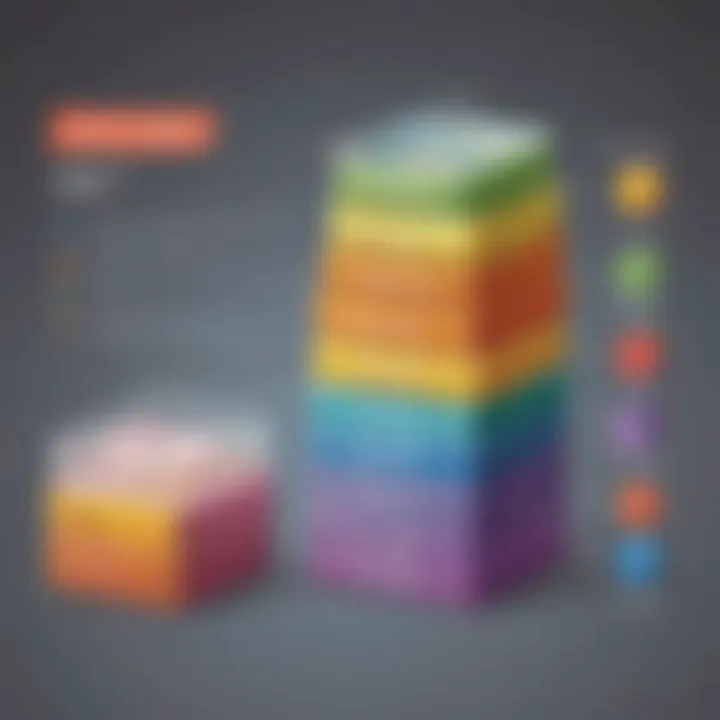
Many common misunderstandings arise from:
- Focusing solely on appearance: Students might believe a larger object has more volume without reasoning about the width or height.
- Ignoring details in problem statements: Some students tend to overlook units specified in problems. This can create errors in understanding.
Instead, developing a habit of breaking down the problem and clarifying the question can help learners avoid misunderstandings. It allows for more critical evaluations of what volume entails, rather than rote calculations.
“Understanding a problem is the first step toward a solution.”
Overall, recognizing both common errors in calculations and misinterpretations contributes to a deeper understanding of volume. Encouraging children to reflect upon their mistakes opens a pathway for more confident engagement with mathematical concepts.
Tips for Solving Volume Problems
Understanding volume problems is crucial for young learners, as it reinforces their abilities in mathematical reasoning, problem solving, and spatial awareness. These skills surface not only in academics but also in daily life situations. Learning to tackle volume problems effectively equips students with a logical approach and a methodical mindset. When they grasp them well, it reduces errors and It facilitates their overall capability concerning mathematics.
Step-by-Step Approach
Taking a step-by-step approach to solving volume problems is vital. It allows students to break down complex problems into manageable parts. This makes the process less overwhelming. Here is how to approach this:
- Identify the shape: Understand what type of solid is involved, whether it is a prism, pyramid, or any other shape.
- Determine relevant measurements: This could mean heights, widths, lengths, or radii. Write them down clearly.
- Choose the right formula: Knowing which formula to use is essential. If it is a cuboid, you would use length × width × height.
- Calculate: Plug values into the formula and perform the calculations carefully.
- Double-check steps: It is important to verify each step to avoid little mistakes.
- Include units: Consider units of volume carefully and express the final answer appropriately.
By emphasizing each step, learners reinforce their understanding and hone their calculation skills.
Utilizing Visual Aids
Visual aids can greatly enhance the learning experience. For instance, it can be difficult to conceptualize three-dimensional spaces without seeing some representation. Below are important points:
- Diagrams and Drawings: Sketching shapes helps students visualize them. They can label measurements directly on the sketch. This serves as a great practice.
- Physical models: Using objects like building blocks can provide tactile experience. Students can physically manipulate shapes and gain insights about volume.
- Charts and Tables: Letting students fill in volume charts based on various shapes enhances their comprehension. Visual comparisons can clarify concepts better than abstract thought alone.
- Interactive Software: Utilizing educational software or online resources lets students experiment and see changes in solutions interactively. Certain programs provide files for students to manipulate volumes online.
In preparing visual aids, learners foster creativity and interest in volume problems. They also maintain engagement, turning abstract concepts toward an understandable practice.
Utilizing diagrams, models, and software is a key pathway to grasp difficult volume concepts easier.
Interactive Volume Activities
Interactive volume activities are essential for young learners as they provide an engaging approach to grasping the concepts surrounding volume. These activities foster a hands-on experience that enhances understanding. By participating in fun, practical tasks, students can visualize and manipulate volume in ways that static lessons cannot offer. This method of learning not only solidifies basic concepts but also encourages enjoyable exploration among children.
Volume Measurement Games
Games focused on volume measurement present learning as an exciting challenge. They enable children to practice calculating volume in a low-pressure setting. Through competition and teamwork, young learners gain comfort with numerical measurements, fundamental formulas, and unit conversions.
Examples of Volume Measurement Games:
- Volume Estimation Challenge: Collect various containers of different shapes. Have students guess the volume and then measure its actual content using standard units. This will bolster their estimation skills while familiarizing them with practical, real-world volume applications.
- Volume Relay Race: Split students into teams. Each team must measure, calculate, and record the volume of cups filled with water passed during the relay. It incorporates physical activity, enhancing engagement while deepening understanding.
These games directly reinforce the calculations they learn in textbooks but in a memorable, interactive way.
Hands-On Learning Projects
Hands-on projects complement theoretical learning through practical applications. Involvement in projects fosters creativity. Students conceptualize volume rather than just memorizing formulas. This form of learning provides deeper insight into how volume operates in everyday life.
Ideas for Hands-On Learning Projects:
- Create a Volume Chart: Ask students to gather various container types around their home, and determine their volume. They can compile a chart detailing volume measurements for educational display.
- Build 3D Models: Have children use modeling clay or items like blocks to construct different prisms and shapes. Then, they can measure and calculate the actual volume of their models. This tactile engagement plants a clear understanding of how shapes correlate with volume.
Projects like these encourage collaboration. It allows students to communicate and share insights, further building confidence in their understanding of volume. Instruction elevates learning through tangible experiences, setting a foundation of knowledge that can be drawn upon in the future.
End and Summary of Key Points
The conclusion of this article aims to reinforce the significant role that understanding volume problems plays in a student's educational journey. Mastery of volume concepts lays a foundation for further mathematical learning and real-life application. By taking a step back and reviewing key aspects discussed in this guide, readers can appreciate volume not only as a subject matter in school but also as a tool that influences various life scenarios.
In summary, we covered several pivotal points:
- Definition of Volume: Volume measures how much space an object occupies, fundamental in geometry.
- Key Measurement Units: Understanding both liquid and solid volume units is important. Students should be familiar with liters, gallons, and cubic centimeters.
- Types and Formulas: Knowing how to find the volume of prisms, pyramids, and composite shapes illustrates diverse problem-solving approaches.
- Real-Life Applications: Volume sees frequent application in cooking, packing, and construction, demonstrating its practical value.
- Common Mistakes and Solutions: Addressing common errors helps learners build confidence in their skills.
- Interactive Activities: Incorporating games and projects encourages engagement and solidifies learning.
Mastery of volume concepts not only enhances academic performance but also supports critical life skills in measuring, estimating, and estimation of capacity.
The benefits derived from familiarizing oneself with these concepts extend beyond mere classroom success. They prepare young learners for various challenges they may encounter. As they practice and encounter real-world problems, confidence increases, fostering a positive attitude toward mathematics.
A focus on these essential elements encourages reflection and retains knowledge, making the learning experience meaningful and enjoyable.
Recap of Volume Concepts
In reflecting on volume concepts, essential definitions, formulas, and types should come to mind. Volume is understood as an expression of three-dimensional space. Different geometry types serve varied contents, such as:
- Cubes & Cuboids: Simple structures where formulas can be applied using the dimensions length, width, and height.
- Cylinders and Spheres: More complex geometrical figures needing specific formulas to compute volume accurately.
Familiarity with these principles supports lasting comprehension, which enhances capacity in approaching essential problems of volume.
Encouraging Further Exploration
Fostering a spirit of inquiry in students is integral to a robust educational experience. Parents and educators can facilitate this exploration by providing opportunities for practical experience. Consider the following tips for encouragement:
- Engage in Projects: Involving learners in practical tasks, like calculating the volume of containers when cooking, can be quite beneficial.
- Explore Innovative Games: Encourage using interactive apps and learning resources that make measuring volume a fun challenge.
- Provide Resources: Suggest websites such as Wikipedia, Britannica, or reddit where children can inquire further and explore topic-related discussions or experiments.
By nurturing curiosity in volume through diverse and hands-on methods, learners may see continual growth. This foundation allows students to thrive not just in keeping and solving volume related challenges but throughout their broader mathematical explorations.







